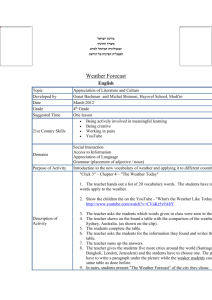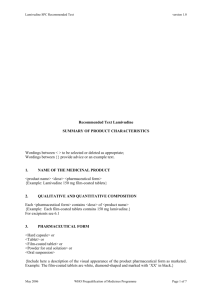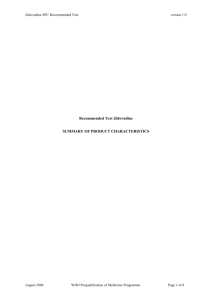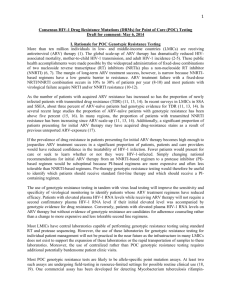abstract_defense
advertisement
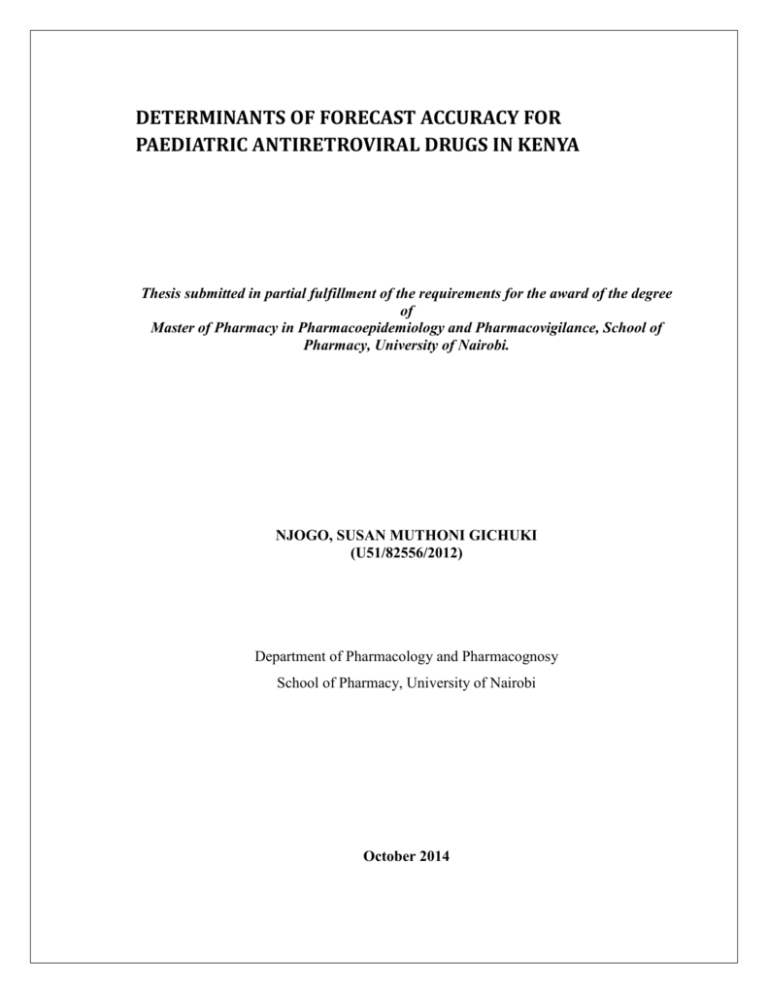
DETERMINANTS OF FORECAST ACCURACY FOR PAEDIATRIC ANTIRETROVIRAL DRUGS IN KENYA Thesis submitted in partial fulfillment of the requirements for the award of the degree of Master of Pharmacy in Pharmacoepidemiology and Pharmacovigilance, School of Pharmacy, University of Nairobi. NJOGO, SUSAN MUTHONI GICHUKI (U51/82556/2012) Department of Pharmacology and Pharmacognosy School of Pharmacy, University of Nairobi October 2014 ABSTRACT Background: Antiretroviral drugs are used for Human Immunodeficiency Virus (HIV) infection prevention as well as long-term therapy. Use of these drugs is essential in reducing HIV infection prevalence and improving the quality of life of people living with HIV infection. Availability and access is thus very important. Uninterrupted supply can be achieved through routine forecasting and supply planning. Forecasting for paediatric antiretroviral (ARV) drugs is complex due to the fact that dosing is weight-based, a suitable range of paediatric drug formulations is lacking and paediatric ARV drugs are not packaged in monthly dosage requirements. Forecast accuracy, consumption monitoring and timely supply planning are key elements to uninterrupted supply. Objectives: The objectives of the study were to determine forecast accuracy for paediatric antiretroviral drugs in Kenya; determine relative proportions of children at various weight categories and on various antiretroviral regimen and formulations; determine within and between-individual changes over time with regards to weight and formulation; and identify factors that influence choice of ARV formulations dispensed to paediatric patients from the pharmacy personnel perspective. Methodology: Forecast accuracy was calculated using Mean Absolute Percentage Error (MAPE) for periods 2010/11, 2011/12 and 2012/13. Retrospective longitudinal cohort design was used to determine effect of age, weight and sex on ARV formulations dispensed to children over time. In-depth interviews were done to establish factors that influence choice of ARV formulation dispensed to children. Forecast and consumption data was collected. Data on age; weight; sex; regimen and ARV formulations was also collected. Univariate, bivariate and repeated measures logistic regression data analysis was done. A point of concept saturation approach was used for qualitative data analysis. Results: Forecast accuracy for seven paediatric ARV formulations was established for 2010/11, 2011/12 and 2012/13 forecast periods. abacavir/lamivudine 60/30mg; Forecasts were found to be inaccurate for zidovudine/lamivudine 60/30mg; zidovudine/ lamivudine/nevirapine 60/30/50mg; efervirenz 200mg; Lopinavir/ritonavir 80/20mg and 2 zidovudine 10mg/ml where MAPE ranged between 11.8% and 2198.9%. NVP 10mg/ml is the only product that recorded reasonable forecasts where MAPE of 41.6%, 49.1% and 24.4% was observed in 2010/11, 2011/12 and 2012/13 respectively. Forecast errors were found to be nonrandom. For repeated measures data, majority of the children were males and constituted 171(55.0%), 171(55.9%) and 169(55.8%) in July 2010, 2011 and 2012 respectively. Median and interquartile (IQR) range for age were 9.2(6.8, 12.0), 9.6(7.3, 12.0) and 10.3(7.5, 12.5) years in July 2010, 2011 and 2012 respectively. Median and IQR range for weight were 26(20, 32), 27(21, 32) and 28(21, 34) Kg in July 2010, 2011, 2012 respectively. 55.0%, 61.5% and 64.9% of children were in the ≥25 Kg weight category in July 2010, 2011 and 2012 respectively. Only 19.0%, 30.3% and 32.6% of children were on paediatric formulations for period 2010/11, 2011/12 and 2012/13. The study revealed that children were likely to turn 25 Kg at age 8 years. Male children were found to be more likely to use adult formulation than female children. Dispensing staff reported weight, age, paediatric ARV drug availability; and preference to dispense paediatric ARV formulation as factors that influenced choice of drug dispensed to children below 15 years. Conclusion: Forecasts for abacavir/lamivudine 60/30mg; zidovudine/lamivudine 60/30mg; zidovudine/ lamivudine/ nevirapine 60/30/50mg; efervirenz 200mg; lopinavir/ ritonavir 80/20mg and zidovudine10mg/ml were inaccurate in 2010/11, 2011/12 and 2012/13. Only nevirapine 10mg/ml had accurate forecast across the three periods. The forecast errors were found to be non-random. The forecast did not take into account sex and age as important variables that determine formulations dispensed to children. Dispensing staff reported drug availability and their preference to dispense particular formulations as factors that influenced choice of ARV drug they dispensed to children. Recommendations: There is need for evidence based forecasting where data on variables that are required for forecasting are continually collected and reviewed against consumption patterns. In addition, it would be necessary for forecast performance to be monitored on quarterly or biannual basis for early detection and correction of errors. Use of different forecasting approaches and models would be important in comparing forecast performance. 3





